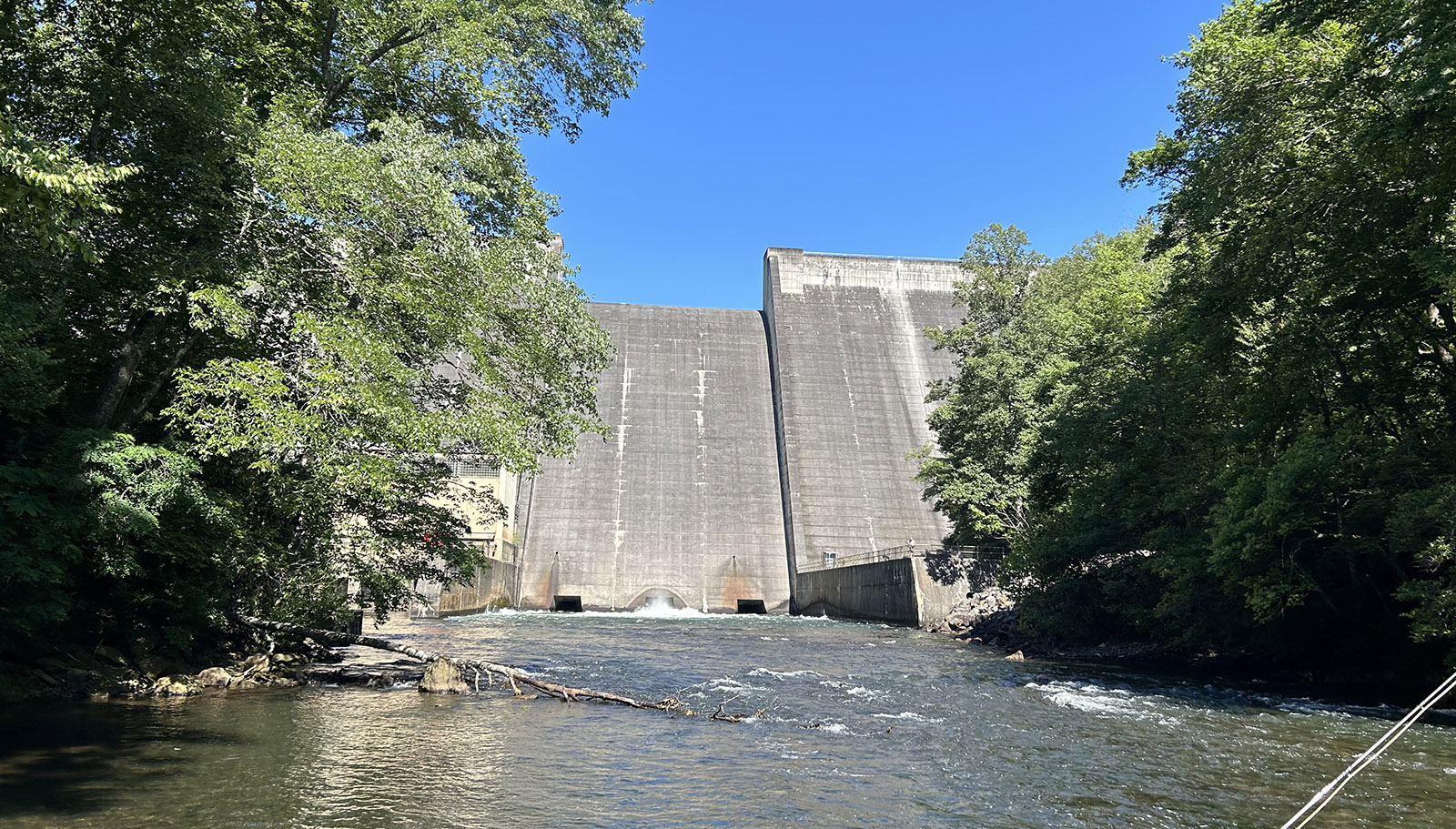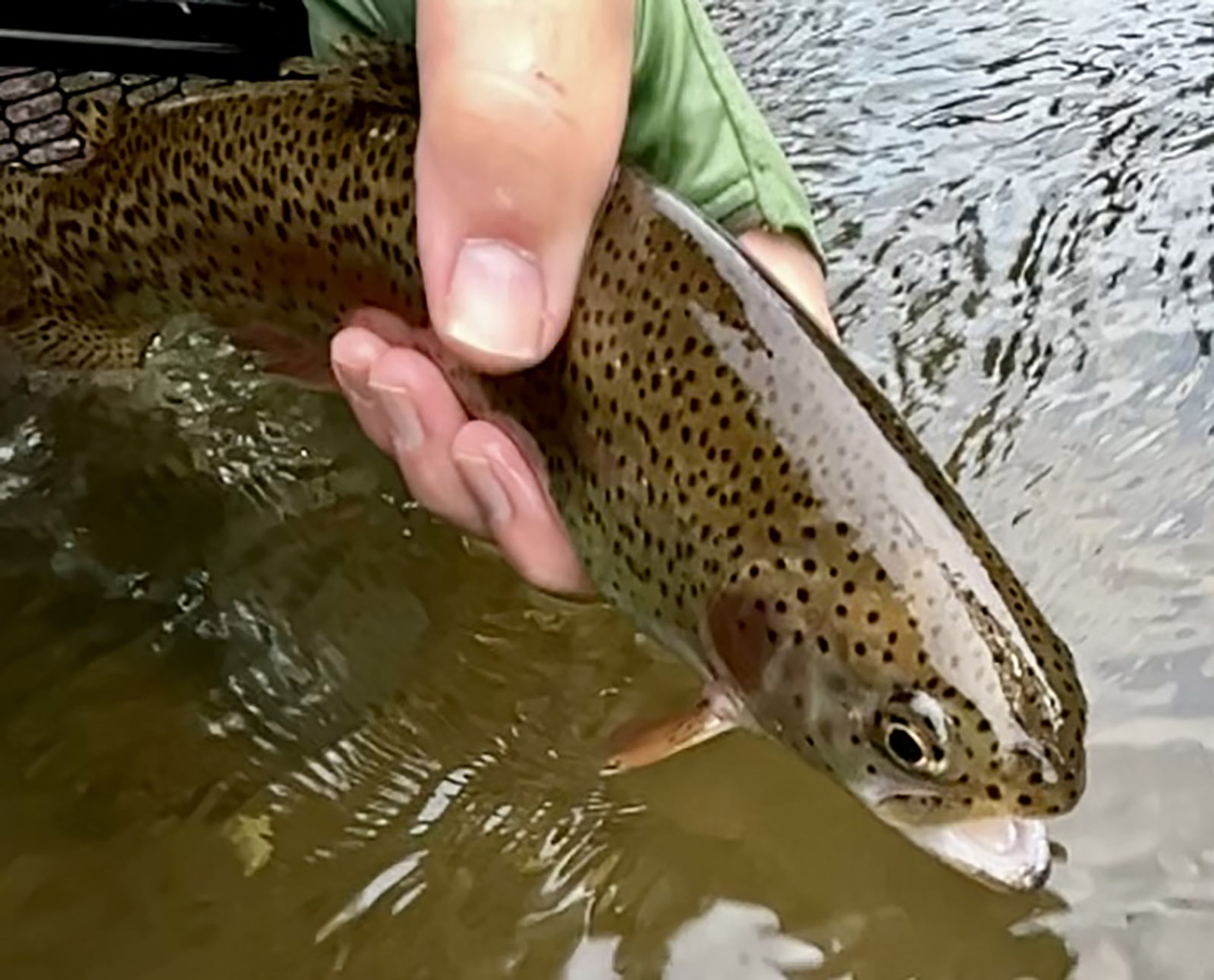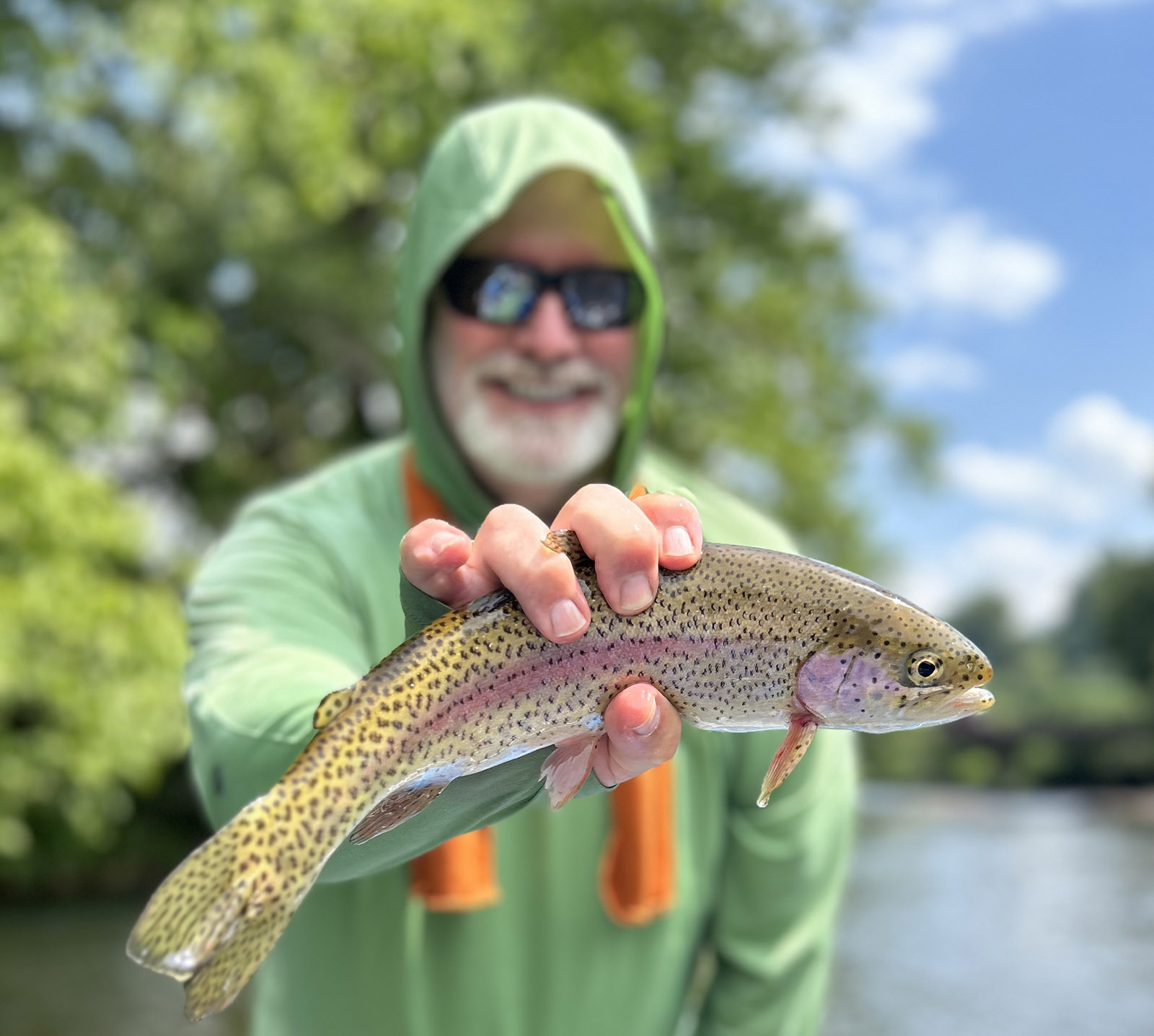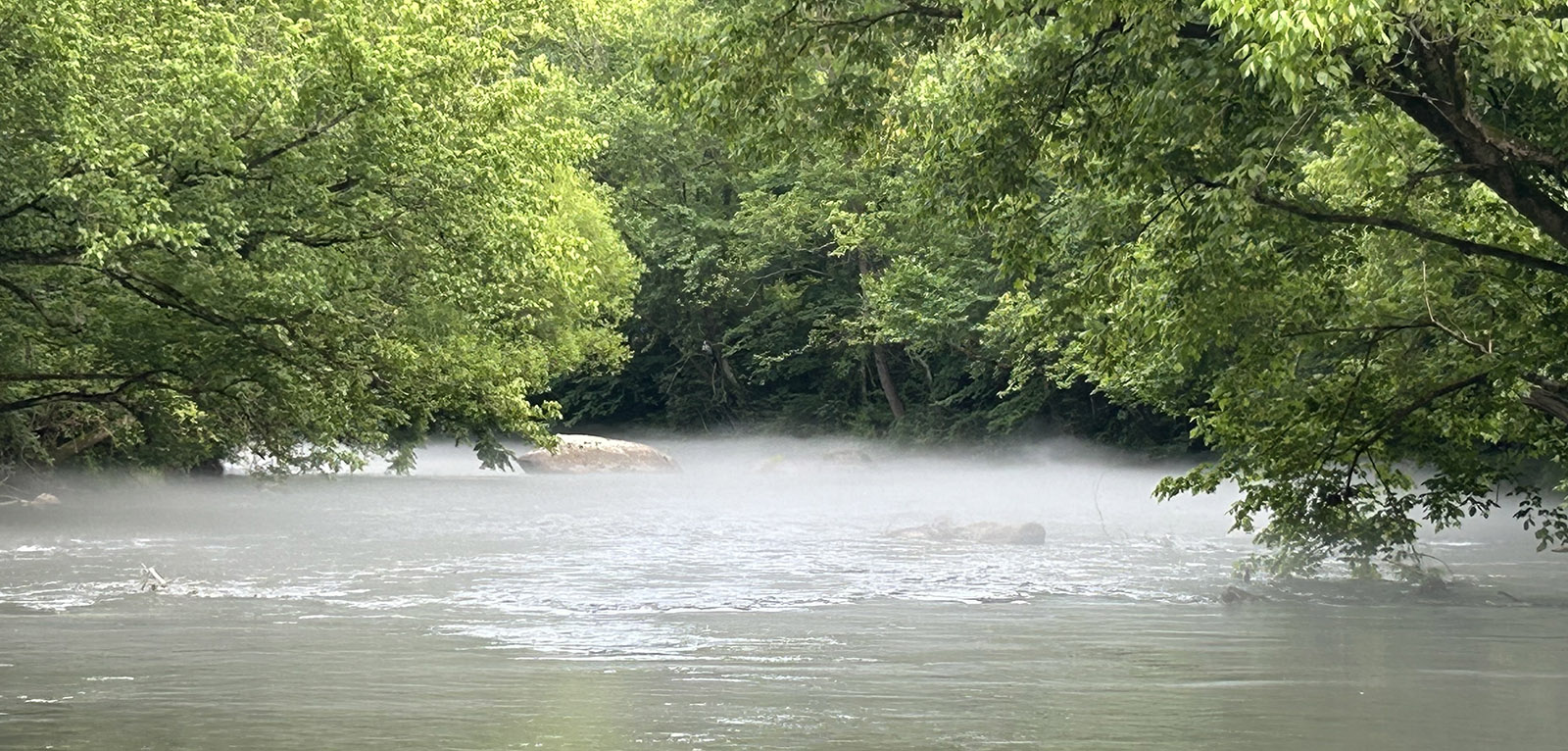By Dr. Peter Brookes
Photos by Dr. Peter Brookes
I’d really been looking forward to fishing the Smith River in Franklin and Henry counties since I included it in my April DWR piece on Virginia’s top five trout waters. It was the only trout water I hadn’t fished on that list (which I admitted in the article.)
Unfortunately, the weather turned wicked in the days before my visit to the Smith in late June; most of the East Coast was sweltering under a so-called “heat dome.” As I joked with another frustrated fishing friend: “You know, ‘heat dome’ is not just one, but two four-letter words.”
I was concerned the trip wouldn’t happen. “Ack,” I thought, “It’s going to be too hot to fish.”
I’d planned for two days with a local guide who is a regular source of Smith River info for the Virginia Department of Wildlife Resources (DWR), and active in the conservation-minded Dan River Basin Foundation, which includes the Smith.
I anxiously texted him about the prospects for fishing in the insufferable heat. He responded almost instantaneously; covering my eyes, I nervously peeked through my fingers at his reply. He wrote: “We’ll be fine.” Phew!
He was right: The Smith is–tahdah!–a tailwater.
Since the Philpott Dam has a bottom release from Philpott Lake, the water temperature at the discharge into the Smith runs at about a chilly 50 degrees Fahrenheit–even in summer. While the water warms a few degrees downstream, the temperature stays trout- and fishing-friendly.

Downstream from the Philpott Dam.
The plan for Day One was to fish the section below the dam for about six miles, getting out near the town of Bassett. On Day Two, we’d float through Bassett for another six miles before taking out at Fieldale.
The river is about 30 miles long, but these two upper sections provide some of the best trout fishing.
As a trout water, the Smith is known for several things: wild (!) brown trout, good-sized stocked rainbows, and prolific hatches of trout-tempting insect life, especially Sulphur mayflies. With caddis and blue-wing olives also coming off, it’s a dry fly fisher’s and an entomologist’s trout bugapalooza.
When we hit the water late morning on the first day, the hatches hadn’t yet begun, so we rigged up the rods for nymphs and caught a couple of nice ‘bows, dredging some deeper holes. It wasn’t long before we started seeing some gentle rises on the water, and we switched to dry flies.
In fact, I didn’t catch another ‘bow that day–only brownies. Rainbows are throughout this upper part of the river; they just weren’t looking up. But the browns were–and I landed 15 of them on #14 and #16 Sulphur dry flies with a light 4-weight fly rod.

The biggest brown was a 14-incher, but I easily lost 10 more fish.
We started Day Two again in the late morning. I didn’t see a lot of bug activity, but trout were already dimpling the surface across the width of the river across from our put-in point. While my guide made some last-minute preparations, I targeted a brown that fed rhythmically in some shallow riffles with a large hopper pattern.
The happy, little brownie snarfed it up. Game on!
Indeed, Day Two was even more epic, bringing to hand another 25 browns and nine ‘bows on both nymphs and dry flies (with an estimated 90 percent surface takes); the fishing fun included a double hook-up of two 7- to 9-inch browns on a dropper-double nymph rig.
I couldn’t understand why the pull on the rod was so strong for the one fish I thought I hooked. I had actually hooked two trout, but looking down through the water column toward the bottom of the rig all I could see was one fish. Miraculously, we were able to net both fish. (That’s good luck, isn’t it?!)
The biggest catches of the day were a 15-inch brown and a similarly lengthy rainbow with some impressive shoulders. In fact, all of the ‘bows were pretty chunky. The guide insists that there are much bigger fish in there; I’ve no doubt.

In two days of fishing, we’d netted some 50 trout.
Another terrific thing about the Smith is that while anglers often share the water with kayakers, these fellow travelers were always courteous. Besides a “Hey, how’s the fishing?,” the ’yakers (and a few tubers) made great efforts to move through without disturbing the water we were fishing. Much appreciated–thanks!
Another natural phenomenon that I couldn’t get over on the river was these banks of cool condensation–or river fog–that floated eerily across the water due to the difference in air and water temperatures. Picture dry ice wafting across the stage at a big-hair, head-banging rock concert–or not….
Anyway, standing in, or passing through, one of these fog banks was like walking into an air-conditioned room, which was welcomed due to the ambient air temperature of 90-plus degrees those two days. (Pumping lots of liquids and dipping a cooling towel into the crisp river water also helped.)

George Palmer, DWR aquatics biologist for the Smith, told me that they’ve seen a marked improvement in the fishery since Philpott Dam stopped generating power after the 2020 flood, which damaged it.
The steady release of cool water–absent the normal peaking flows during power generation–has led to “more regular fishing patterns” and an improvement in the growth rate of the wild brown trout.
A couple of other things about the Smith.
The river is potentially fishable year-round, depending on conditions of course, but the discharge from Philpott Dam drops in the cooler months, which can make for more challenging fishing in skinnier waters.
My guide opined that the best time of year for beginners and first-timers to the river is probably April; for dry fly fanatics, the best bug hatches happening in May and June. The river is floatable and wadable in appropriately safe places.
Another important thing to note: The Smith is a Special Regulation brown trout water. DWR designates two sections of the river as put-and-take stocked waters that provide opportunities to catch rainbow trout.
I was right in my April DWR column, “Five-Star Trout Waters at Your Feet”—the Smith is an awesome trout fishery. Quite simply, it’s an angler’s “hatch made in heaven.” (Sorry, couldn’t resist.)
So get yourself a Virginia fishing license and get on down to one of the Happy (feeding) Hours in the Smith’s Brown and ’Bow Town.
Dr. Peter Brookes is an award-winning, Virginia-based outdoor writer. brookesoutdoors@aol.com


